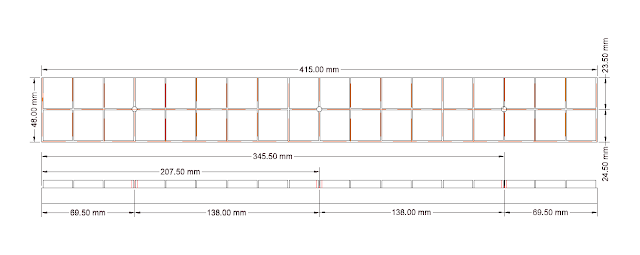Combat Series 1 - Knight Move Attack
Daidoji Akagi by Chris Appel, copyright Alderac Entertainment
It is proving, not unexpectedly hard to get actual examples of some of these attacks in game. Either the game just does not cause them. Or more likely a more important point prevents their play.
Either way rather than sit here and wait before moving on I thought a more useful compromise would be to study the position that requires the attack and then some of the variations that are often lesser compromises would be.
Now before I start I will point out that, unlike some you tube channels out there, I am not pretending the fundamentals sprung out of my head. The example in this post comes from James Davies excellent book 'Tesuji' published by Kiseido. One site that springs to mind gave the examples then all the variations as if the blogger thought it all up themselves.
First up we should look at the requirements. Now the base point here is a string in a diagonal line of color A, color B then color A.
From the book
So we have 3 stones in a diagonal row with Black being the aggressor (in this case). A second point to note is that this does not have to be a 'kill# move - White could be alive and Black just wants to block them in. Also note that this attack needs a weakness in Blacks surrounding wall - in this case a single stone. If both sides of black are doubled up then a simple net would trap white with no further work needed.
So take this example
So essentially White sacrifices the 2nd stone played (and possibly the 3rd) to break out the 2 stones. Now that group is still under attack so there is some grounds to consider just leaving them and taking points elsewhere but they are cutting stones and if it lives then some pressure could be placed on Blacks 3? groups.
Even if White then swings round to try and attack the North two stones and Black just plays very passively White cant out speed Black
i.e
i.e One extra stone and white is damned either way
BUUUUT. Run this position through AI and AI begs to differ. It doesn't on the weakness of the upper stones. It thinks Black loses 8.4 points through the stated play.
But notice that white can now apply the same pressure as before the knight. If white pushes to G15 and Black caps to prevent escape white can drop to F14, black caps at F13 and white has an atari with G13, black extends and white can push out.
This series seems based on white actively pressurizing the top stones but if it wanted to escape then E13 would do the job though this would result in a blob without shape...
A final note is that even the 'bad' move indicated is not all that bad (really) it has to be played well as black is essentially juggling two groups but so is white and if Black concentrates on securing their position then they can get a good result. If white attacks either side early then as their own central group is still weak they can also be placed at considerable risk.
i.e here Black carries out the incorrect block and follows through the book 'bad' play and ends up in a decent ish position
Now white now gets to surround the bottom group but Blacks top group is strong and can apply come pressure to the center.
AI recommends securing the top faster (in this situation) as so













Comments
Post a Comment